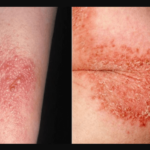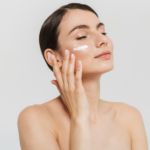One of the things that most adults aspire for is to have smooth, healthy, and glowing skin. This state often happens when your skin renews, shedding off old and dead skin cells so that young and new cells make their way to the surface. There’s a “skin turn over” schedule when that happens, and it depends on a number of factors as well. So, how long does it take for skin to turn over?
The natural process of how long it takes for skin to turn over will depend on each stage of life. This is a rough average of how long it takes for the skin to turn over for each stage:
- Babies: around two weeks
- Teens: between three to four weeks
- Beyond the teen years: once a month (or roughly around 30-40 days)
- After the age of 50: every 45-90 days
The time it takes for skin cell regeneration varies based on a number of factors. Read on to learn more about the time it takes for skin to turn over, as well as how to encourage cell turnover so you look your best!
How Long Does It Take for Skin to Turn Over?
As you will see, the natural process (meaning you do not do anything to your skin to force itself to undergo renewal) slows down as you age. From when it used to take just a few short weeks for the skin to renew, a longer wait is expected once you’re in your early adulthood and even more so when you become elderly. These cycles are a rough estimate because other factors will affect the rate of skin renewal from person to person.
Exposure to the elements, weather conditions, and other environmental and physical life factors all play a part in determining how fast or slow your skin will renew. To further complicate things, your own hormones and genetics are also factored in.
Why Skin Turnover Happens
The skin is the largest organ in our body, and it has a very important job of protecting us from UV radiation, changes in temperature, chemical exposure, and the like. For it to do its job properly, the skin cells must be at their healthiest and newest.
This is why our skin undergoes natural turnover regularly. Old skin cells are damaged skin cells that need to be replaced with newer ones that protect us.
The Process of Natural Skin Turnover
Try as you might, you won’t see brand new-looking skin cells sitting side by side dead skin cells until they fully occupy the surface. The process of natural skin turnover happens at the microscopic level and starts out deep into the innermost parts of your skin’s dermal matrix. This is where your body makes new skin cells non-stop, which migrate upward as they mature and eventually reach the surface.
So, what happens to the dead or old skin cells that occupy the outer or topmost layer of the skin? These (around 25 to 30 entire layers of them!) experience a process called keratinization – where the cells convert into a protein called keratin, become dry and hard, and then eventually ends in cell death.
These now-dead cells are sloughed off through our natural movements and interaction with the environment: being rubbed off from our hands, towels, and other surfaces. They become loose and are thus easier to rub off, making way for the newer cells that constantly push themselves up to the surface.
The below video shows a useful, animated version of the skin cell regeneration process, including the time it takes:
Staying Past Their Deadline
Sometimes dead skin cells end up accumulating on the top layer of your skin and don’t get sloughed off right away. When this occurs, it has a direct effect on your appearance and overall skin health. If your skin looks dull and you have an uneven complexion, it means you have an overaccumulation of dead skin cells that get in the way of bright and glowing skin.
If you notice that you have clogged pores, comedones, and the like, it means you are due for a skin cell turnover, stat. Ignoring these will only worsen the problem because you are then presented with the risk of having a bacterial infection.
And because the older you get, the slower the skin cell turnover process happens, you might need to give your skin a helping hand to facilitate cell renewal faster.
How to Encourage Cell Turnover?
Instead of crossing your toes and fingers and hoping for cell turnover to happen faster, you can do several things to encourage natural turnover to facilitate at a faster rate:
- Follow a healthier diet. Consuming foods that are rich in vitamins, minerals and other good-for-the-skin nutrients is the best way to encourage natural skin turnover from the inside out. This means lots of veggies, fruits, lean proteins, omega-3 from fatty fish, and whole grains.
- Consider taking vitamin A. Vitamin A is retinol, which is in charge of skin maintenance. The more you have it in your system, the faster your skin will work on sloughing off dead skin cells naturally.
- Try applying alpha hydroxy acid (AHA) topically to your skin. Retinol belongs under the family of AHAs, and many people apply it directly to the skin to promote skin renewal faster. Keep in mind that the concentration of retinol in AHA will matter because if it is too high it can be drying. It is best to ask a licensed dermatologist for the right percentage of retinol to use for your own skin type.
Chemical and Manual Exfoliation
Apart from what was mentioned, there are two additional things that some people also do in order to further increase cell turnover rate – and that is chemical and manual exfoliation. This is where you take an extra step to purposefully slough off the dead skin cells sitting on the uppermost layer of your skin – literally.
Chemical Exfoliation
Chemical exfoliation means putting a thin layer of acid to remove the dead skin cells. Some examples of chemical exfoliation (also known as chemical peels) include salicylic acid, glycolic acid, and lactic acid. These types of peels are able to penetrate only the outermost layer of your skin, which makes them safe for over-the-counter and at-home use.
Thus, you will find these ingredients in many skin peeling products (facial creams, lotions, and serums) in popular skincare stores and beauty counters without the need for a prescription.
Other chemical peels that penetrate deep into the surface of the skin will require a dermatologist’s approval. You may also need to submit an application, such as the case of mandelic acid. Because these penetrate deeper, they are often only used in special cases and are not for regular use.
Manual Exfoliation
Meanwhile, manual exfoliation comes in the form of gentle abrasives that rub on the skin to loosen and remove dead skin cells. These come in the form of facial scrubs, exfoliating tools, and the like. Products like these have rough ingredients or surfaces that manually or mechanically rub dead skin cells off your skin.
These often include natural ingredients that have some measure of coarseness to them, such as sugar, salt, baking soda, ground-up nut shells or fruit pits, and even micro-bead technology. You can use these in your regular bathing routine to gently remove a thin layer of dead skin cells that no amount of rubbing with your fingers will be able to remove.
The general rule of thumb is to use chemical exfoliants every other week and use manual exfoliants up to two times per week, so you don’t end up with raw, red, and sensitive skin.
Over-exfoliating can be very bad for your skin, as they won’t be able to do the job they’re meant to do (protect you from the elements). If you over-exfoliate, your skin cells will be too busy being renewed at an abnormally fast rate – which can oftentimes be painful for you!
See the below video on skin cell regeneration and how to encourage it faster through exfoliation:
Conclusion – How Long Does It Take for Skin to Turn Over?
How long does it take for skin to turn over? The short answer to it is that it depends on how old you are, what your lifestyle factors are, and whether or not you take an extra step for cell turnover to occur. Babies take two weeks, teens around 3-4 weeks, and adults can expect skin turnover to happen once a month. In your golden years (50 and beyond), expect it to happen every 45 to 90 days.
Cell renewal is important because we need new cells to fight off the elements that hay harm our skin, but sometimes turnover doesn’t happen as fast or as regularly as it should. When this happens, you’ll be at risk of having a dull and uneven complexion, or worse – bacterial infection in the form of acne.
Having a healthy diet, taking supplements with vitamin A, and applying AHA-laden lotions are natural ways to help speed up skin renewal.
If you need to give your skin an extra nudge, chemical and manual exfoliation are strategies that work for many people. Just make sure you are not overzealous with your efforts because you might end up over-exfoliating your skin.
This can leave you with skin redness, irritation, and sensitivity. Use manual exfoliants a maximum of 2 times per week and chemical exfoliants every 1-2 weeks to be on the safe side!
Related reading:
Armpit Skin Peeling: Causes and Treatments
Bottom of Feet Peeling: Causes and Treatments


![Neutral Skin Tone Defined [and Best Colors for Neutral Skin] neutral skin tone](https://skincaregeeks.com/wp-content/uploads/2021/05/neutral-skin-tone-150x150.png)






